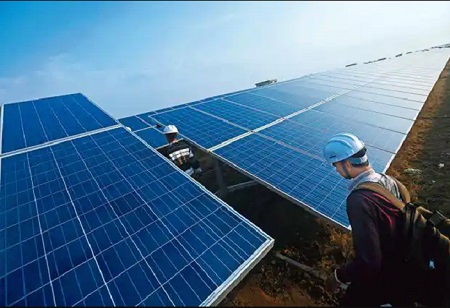India options to research styles deployed by world-wide businesses such as Tesla Inc. for setting up built-in photo voltaic roof and battery storage systems, said two authorities officials informed of the development, as New Delhi seeks to accelerate its thrust to minimize dependence on pricey oil imports.
“The issue is becoming reviewed inside the government and is crucial from an electricity stability viewpoint,” mentioned a senior government official, just one of the two cited previously mentioned, requesting This arrives against the backdrop of the country’s unfolding anonymity, energy changeover wherein the Clear Cooking Mission is wanting to leverage rooftop photo voltaic and in-residence battery infrastructure to provide uninterrupted electrical energy to about 250 million households. Also, cushioning vitality source shocks has been a crucial element of India’s national safety approach as amplified by events such as the Russia-Ukraine war that has led global vitality price ranges to increase sharply. India imports 85% of its crude oil and 53% of fuel necessities.
Any shift in direction of solar energy as domestic cooking fuel will aid in power import substitution and trim India’s hefty energy import bill whilst endorsing the domestic solar market.
As section of the ongoing drive to renewable energy, the FY23 union funds introduced last thirty day period produced an added allocation of Rs 19,500 crore for the marquee creation joined
incentive (PLI) scheme for manufacturing of substantial-performance solar modules. This is in addition to the Rs 4,500 crore PLI plan for solar photograph voltaic modules that was declared previously.
Tesla, China’s BYD Co. Ltd and Modern day Amperex Engineering Co. (CATL) were being between companies that had shown initial interest in the Indian approach to create huge factories for manufacturing lithium-ion batteries.
A total of 10 organizations, including Reliance New Power Solar, Hyundai International Motors Organization Ltd, Ola Electrical Mobility, Lucas-TVS Ltd, Mahindra and Mahindra Ltd, Amara Raja Batteries Ltd, Exide Industries Ltd, Rajesh Exports Ltd, Larsen and Toubro Ltd and India Electrical power Corporation Ltd experienced submitted bids for selection below PLI scheme for manufacturing Advance Chemistry Cells (ACCs) of 50 GWh capacity.
Right after analysis of the bids, the governing administration permitted the proposals of Ola Electrical Mobility, Hyundai Global Motors Co., Rajesh Exports Ltd, and Reliance New Electrical power Solar Ltd.
India, the world’s third-premier oil importer, has been attempting to slice its reliance on energy imports presented that it spent $62.71 billion on crude imports in 2020-21, $101.4 billion in 2019-20 and $111.9 billion in 2018-19. The expense of the Indian basket of crude, which averaged $60.47 and $44.82 for each barrel in FY20 and FY21, respectively, climbed to $94.07 in February, in accordance to information from the Petroleum Preparing and Examination Cell (PPAC). The common selling price was $113.41 a barrel on 22 March. The Indian basket signifies the average of Oman, Dubai and Brent crude.
Key Minister Narendra Modi pledged at the COP26 summit in Glasgow past November to lower India’s whole projected carbon emission by 1 billion tonnes by 2030, cut down the carbon depth of the overall economy by fewer than 45% by the end of the decade and internet-zero carbon emissions by 2070.
Ability storage is anticipated to engage in a critical role to meet up with these aims. India is working the world’s largest cleanse power programme.
In accordance to the Central Electric power Authority (CEA), by 2030, India’s electric power prerequisite would touch 817 gigawatts (GW), extra than fifty percent of which would be cleanse electricity.
